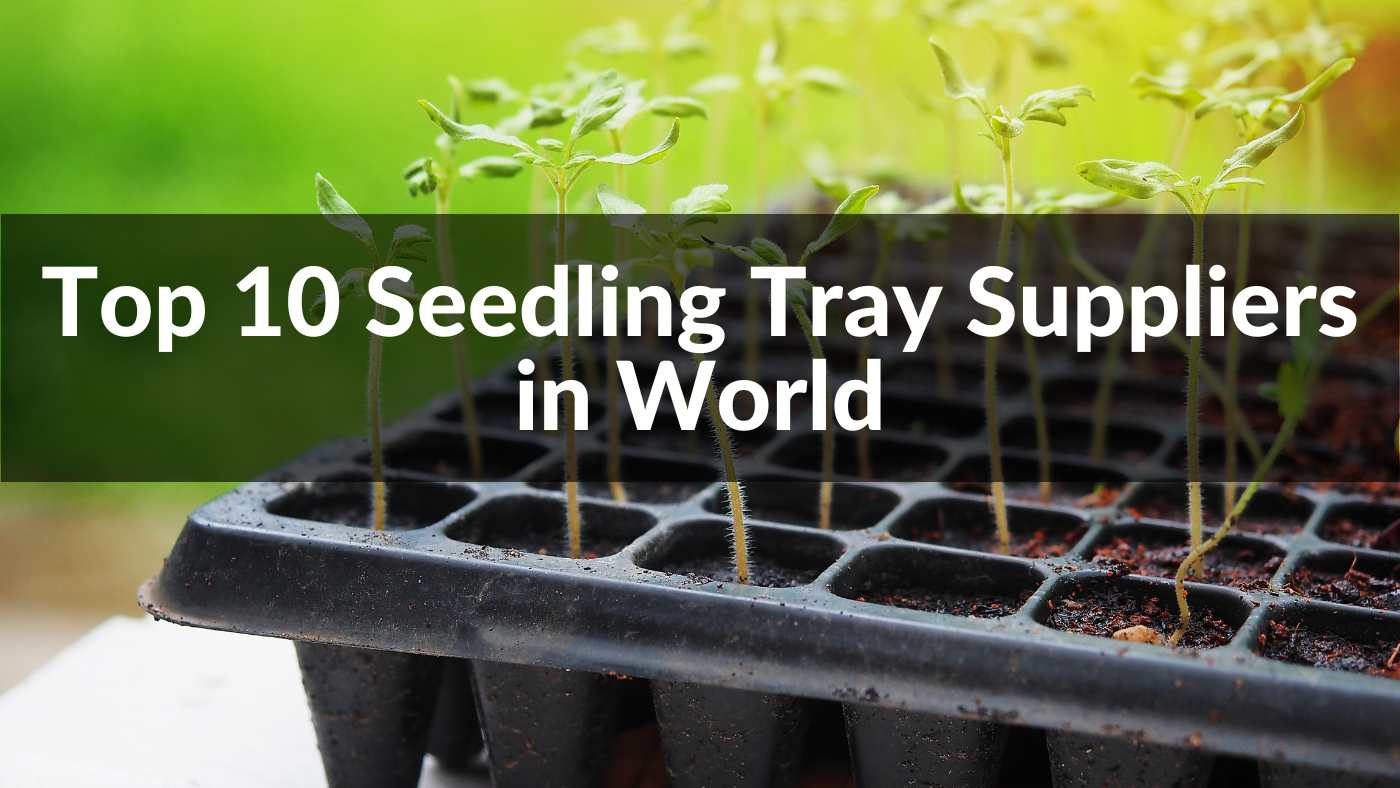
Embarking on the journey of seed starting entails the pivotal choice of selecting the right trays. Seed Starting Trays are the cradles where your seeds burgeon into healthy seedlings, ready for transplantation. Whether you are a hobby gardener or a large-scale market gardener, making an informed decision on the type of Seed Starting Cell Trays to use is paramount for a successful harvest. This comprehensive guide aims to shed light on the science behind Seed Starting Trays, understanding seed germination, and factors to consider when choosing the ideal trays for your gardening venture.
Seed starting trays are an integral part of the germination process, acting as a nurturing home for seeds before they are ready to be transplanted. The design, material, and functionality of seed starting trays significantly impact the healthy growth of seedlings. In this chapter, we shall examine the materials commonly used in seed starting trays, the design considerations with a focus on cell size, and the importance of ventilation and drainage.
Seed starting trays are typically manufactured using either plastic or biodegradable materials. Plastic trays are durable, reusable, and cost-effective, making them a popular choice among growers. However, the environmental impact of using plastic is a downside. On the other hand, biodegradable trays are eco-friendly and provide a sustainable alternative. They decompose over time, reducing waste, yet may come at a higher upfront cost.
The cell size of seed starting trays plays a crucial role in root development. Larger cells provide more space for roots to grow and spread, promoting a healthy root system. Conversely, smaller cells may restrict root growth, which can lead to stunted seedlings. The choice of cell size depends on the type of seeds being sown and the stage of growth at which they will be transplanted.
Proper ventilation and drainage are vital for the health and vitality of seedlings. Ventilation helps to prevent fungal diseases by reducing moisture on the leaves, while drainage ensures excess water is removed, preventing waterlogging and root rot. The design of seed starting trays should allow for adequate airflow and drainage to foster robust and healthy seedlings ready for transplanting.

The journey from seed to thriving plant begins with the critical phase of germination. This stage lays the foundation for a healthy plant and understanding it is pivotal for successful cultivation. Seed starting trays play a crucial role in this phase, providing a conducive environment for the seeds to sprout. In this chapter, we will unravel the basic process of seed germination and delve into the significance of the initial growing phase.
Seed germination is a fascinating process where life begins from a dormant state. It kickstarts when a seed absorbs water, swells, and breaks open its outer shell in a process known as imbibition. The water triggers enzymatic activities, leading to the growth of the embryonic plant within the seed. The root emerges first, anchoring the seed, followed by the shoot that grows towards the light. The right balance of moisture, warmth, and aeration in the seed starting trays ensures a healthy germination process, paving the way for robust seedling growth.
The initial growing phase is a window where the foundation for a plant's health and productivity is laid. It's a delicate period where the seedlings are susceptible to diseases and adverse environmental conditions. A well-designed seed starting tray nurtures the seedlings, providing the right conditions for growth, including adequate space, moisture, and aeration. This phase is crucial as it prepares the seedlings for a smooth transition to the outdoors or larger pots, ensuring a higher survival rate and better growth trajectory for the plants.
Choosing the right propagation tray is a pivotal decision that can significantly affect the success of your seed starting endeavors. Various factors come into play, such as the type of seeds you're sowing, the environment they'll be grown in, and your budget. In this chapter, we will guide you through the considerations to keep in mind while selecting the most suitable propagation tray for your needs.
Different seeds have varying requirements for space, depth, and care. Assessing the type of seeds you plan to sow will help in selecting a tray with appropriate cell sizes and depths. For instance, larger seeds or those with vigorous root systems may benefit from larger cells, while smaller seeds might do well in compact cells.
The environment where you plan to germinate and grow your seedlings plays a crucial role in the choice of propagation tray. Factors such as temperature, humidity, and lighting should be considered. A propagation tray that allows for good drainage and ventilation would be ideal in a humid environment to prevent fungal diseases.
Your budget is an essential factor in making a decision. Plastic trays are generally more cost-effective and reusable, while biodegradable trays, though eco-friendly, might come with a higher price tag. Weighing the initial investment against the long-term benefits, such as ease of transplanting and environmental impact, can help you make an informed choice.
A good propagation tray should make the transplanting process smooth and stress-free for both you and the seedlings. Trays with flexible cells can make it easier to pop the seedlings out without damaging the roots. Additionally, biodegradable trays can be planted directly into the ground, reducing transplant shock.

Selecting the right cell size in a seed tray is crucial for healthy seedling growth and successful transplantation. The choice largely depends on the type of seeds you are sowing, the growth rate, and the stage at which you plan to transplant the seedlings. In this chapter, we’ll explore various cell sizes and provide guidance on how to choose the most suitable one for your needs.
Cell sizes in seed trays are usually defined by their dimensions and volume. They range from small cells, often less than an inch in diameter, to larger cells that can be several inches wide. Small cells are suitable for seeds that produce small seedlings or have a fast growth rate, while larger cells are better for seeds that produce larger seedlings or have a slower growth rate.
The type of seed you are sowing is a primary factor in selecting cell size. Larger seeds or seeds of plants with vigorous root systems require more space to grow, making larger cells a better choice. On the flip side, smaller seeds or those of slow-growing plants may do well in smaller cells.
The stage at which you plan to transplant the seedlings also influences the choice of cell size. If you intend to transplant seedlings at a younger stage, smaller cells might suffice. However, if the seedlings will remain in the trays longer, larger cells will provide the necessary room for growth.
Your budget and the space available for seed starting are other factors to consider. Larger cells require more soil and space, potentially increasing the costs. Assessing your available resources and aligning them with your gardening goals will help in making an informed decision on the cell size for your seed trays.
In large-scale market gardens, choosing the right cell plug tray size is instrumental in achieving efficient germination, healthy seedling growth, and ease of transplantation. The choice hinges on several factors including the types of crops being grown, the available space, and the gardener's management capacity. In this chapter, we'll delve into the considerations for selecting the optimal cell plug tray size and highlight some recommendations for large-scale market gardens.
Different crops have varying root systems and growth rates, which directly impact the choice of cell plug tray size. Larger cells are conducive for crops with extensive root systems or slower growth rates, allowing for adequate space and nutrients. Conversely, smaller cells may be suitable for crops with compact root systems or faster growth rates.
Space is a premium resource in large-scale market gardens. The choice between larger and smaller cell plug trays affects the number of seedlings that can be started per square foot of greenhouse or growing area. Smaller cells allow for a higher density of seedlings, which may be beneficial in space-constrained settings, while larger cells may be preferable when space is less of an issue.
Management capacity, including labor and resources for watering, fertilizing, and transplanting, also influences the choice of cell plug tray size. Larger cells may require less frequent watering and can be easier to handle during transplanting, but they also require more soil and space. Assessing the available labor and resources is crucial in selecting a cell plug tray size that aligns with the operational capacities of the market garden.
Cost efficiency is a vital consideration in selecting cell plug tray sizes. While larger cells may provide benefits like easier handling and less frequent watering, they also come with higher costs for soil and space. Balancing the costs with the benefits, and aligning this with the market garden's budget and operational goals, is key in making an informed decision.

Selecting the right seed starting cell trays is a crucial step towards a successful gardening venture. The right trays foster healthy seedling growth and ensure a smooth transition to transplantation. This chapter will guide you through the primary factors to consider, such as assessing your seed varieties, aligning with your gardening goals, and budget considerations.
The size of the seeds you plan to sow is a primary consideration. Larger seeds will require larger cells in the seed starting trays to accommodate their growth, while smaller seeds can be sown in smaller cells.
Different seeds have varying growth rates and space requirements. Fast-growing seeds or seeds of plants with extensive root systems may benefit from larger cells that provide ample space for growth.
Identifying whether your gardening goals are short-term or long-term will influence your choice of seed starting cell trays. If you are planning for a single season, cost-effective and reusable trays may be preferable. For long-term gardening, investing in high-quality, durable trays may be beneficial.
Evaluate the cost of the trays against the long-term benefits they offer. While initial costs may be higher for quality trays, the long-term benefits such as reusability, ease of transplantation, and healthier seedling growth could outweigh the initial investment.
Selecting the right Seed Starting Trays is a cornerstone for nurturing healthy seedlings and achieving a fruitful garden. The choices are diverse, but aligning your selection with your seeds, gardening goals, and budget is crucial. As a leading manufacturer of Seed Starting Trays, Linkwin offers a wide array of trays designed to meet the diverse needs of gardeners. Explore our range on our website and take a step towards a successful gardening venture with our high-quality, durable Seed Starting Trays.
Read More:
The Ultimate Guide to Planting in Fabric Grow Bags
The Green Haven: Nurturing Growth with Indoor Planting Trays?











We use cookies to make the website work, to provide advanced features, social media and traffic analysis, and we use analytics and third-party advertising cookies. If you choose to click "Deny All", you will retain the default setting of not allowing the use of cookies or other tracking tools other than technical tools.

